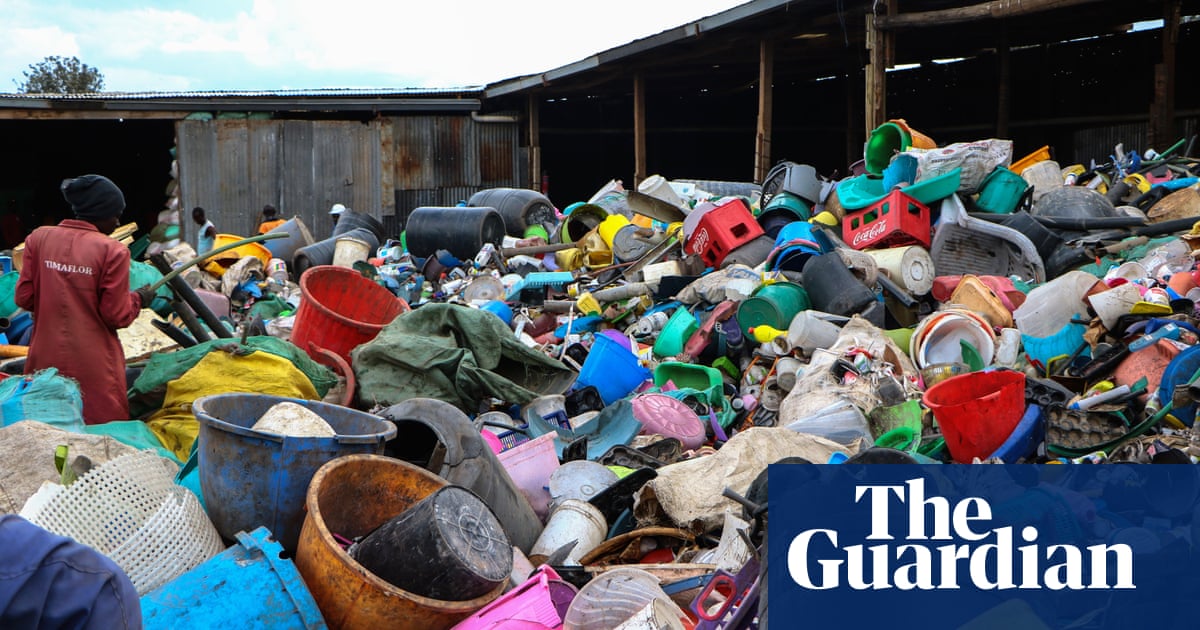‘Biggest, baddest’ – but is it the cleanest? World’s largest cruise ship sets sail | Shipping emissions


The largest cruise ship in the world, which embarks on its first commercial voyage from Miami on Saturday, was launched amid a fanfare of superlatives. Longer than the Eiffel Tower is tall, the Icon of the Seas towers 20 decks above the waves, can accommodate more than 7,000 passengers and crew, and, at a quarter of a million gross tonnes, could swallow five Titanics for breakfast.
Coloured slides on its upper deck mark out “Thrill Island”, the largest waterpark at sea, and it boasts a 17-metre (55ft) indoor waterfall. The president of Royal Caribbean, Jason Liberty, told reporters it was the “biggest, baddest ship on the planet”, though it quickly became known on social media as “human lasagne”.
Yet the launch of the huge vessel in Florida, one of many the same size or bigger that could be built in the next few years, has refocused attention on the impact on the planet of cruise tourism.
Various studies by environmental organisations, comparing the carbon footprint of a week-long holiday on a European cruise with taking a flight and staying in a hotel, concluded that such cruises were up eight times as carbon intensive.
Royal Caribbean has made much of the fact that Icon of the Seas runs on liquified natural gas (LNG), describing it as the “cleanest-burning marine fuel”. However, Bryan Comer, director of the International Council on Clean Transportation’s marine programme, says using such fuel shows an industry “investing in false climate solutions”.
“They are doubling down by calling LNG a green fuel when the engine is emitting 70 to 80% more greenhouse gas emissions per trip than if it used regular marine fuel,” he said. “Icon has the largest LNG tanks ever installed in a ship. It is greenwashing.”
Using LNG rather than other marine fuels cuts carbon dioxide emissions by a quarter. But a cruise ship using LNG emits more greenhouse gas emissions overall, because of something called “methane slip”, Comer said. This is where some gas is not burned, leading to emissions of methane, a climate gas far more potent than carbon dioxide. Methane traps about 80 times more heat than CO2 during the 20 years after it is released into the atmosphere.
Ships should be using fuel cells and renewable hydrogen or methanol, which emit fewer greenhouse gases, he said.
When Icon was designed more than seven years ago, LNG was considered the “most promising fuel available at scale” said Nick Rose, a vice-president of Royal Caribbean.
“We consider it a transitional fuel that helps builds flexibility into our ship design and also helps us more easily adapt to different types of fuels as the market evolves and other scalable alternatives are introduced.”
Icon was built to accommodate fuel cells, which produce electricity without combustion, to be used to power the lifts, but the batteries have not been installed due to a problem with suppliers.
Rose said the company was committed to finding and implementing alternative energy sources, including fuel cells. “LNG is one part of our alternative fuel strategy, along with biofuels, methanol and other energy sources like shore power,” he said.
The vast ship has also been built to run on electricity supplied from shore when it is docked – a cleaner alternative to running highly polluting generators. Venice, Barcelona and Amsterdam are just three of the port cities to ban or curb cruise ships amid growing environmental and health concerns.
Marcie Keever, of Friends of the Earth US, said: “By building these megaships and using LNG, the cruise industry is moving in the wrong direction.
“Larger ships require more infrastructure at ports, destroying reefs and ecosystems in order to accommodate them.”
Source link




